# Microsoft Entra ID (Azure AD) as SAML IDP for SSO
# Preamble
The EE server and client support the SAML protocol that allows you to configure an external service as IDP (identity provider)
for SSO (single sign on).
This guide here will explain how to configure Microsoft Entra ID (Azure AD) as SAML IDP for SSO. We assume that your server can firewall / network wise access Microsoft Entra ID (Azure AD) .
In addition we assume that your webclient is running on https://example.com, the server is reachable with
https://example.com/server (e.g. https://example.com/server/info/ shows you some nice json output). This is your first
SAML provider that you want to configure (therefore we give him the ID "1").
Microsoft Entra ID (Azure AD) allows up to 10 SSO Applications in all versions. Also if you are using Office 365 it is included. (See: microsoft.com/en-gb/security/business/microsoft-entra-pricing (opens new window))
TIP
This feature is only available in the Enterprise Edition.
# Azure Active Directory
As a first step we have to configure Azure Active Directory.
Enable Microsoft Entra ID (Azure AD) SSO
Go to your Microsoft Entra ID (Azure AD) Enterprise Applications (opens new window).

Create Application
Click on "New Application" and choose "Non-gallery application". Select a Name and click on "Add".
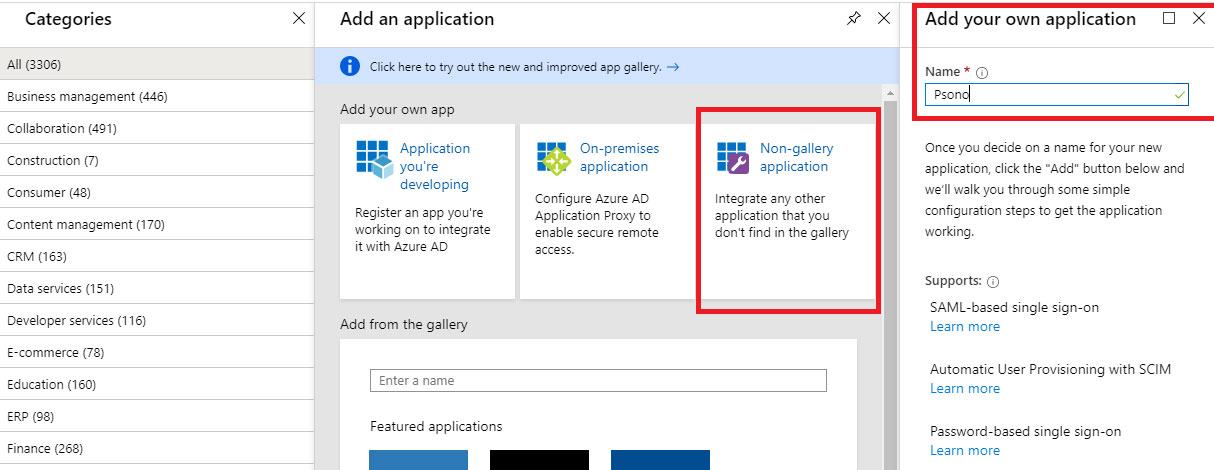
TIP
If you choose an other Name except 'Psono', you need to configure this in the settings.yaml
Configure Application Permissions
Click on "1. Assign users and groups" to assign Users or security groups (Office 365 Groups aren't working) to access Psono via SAML.
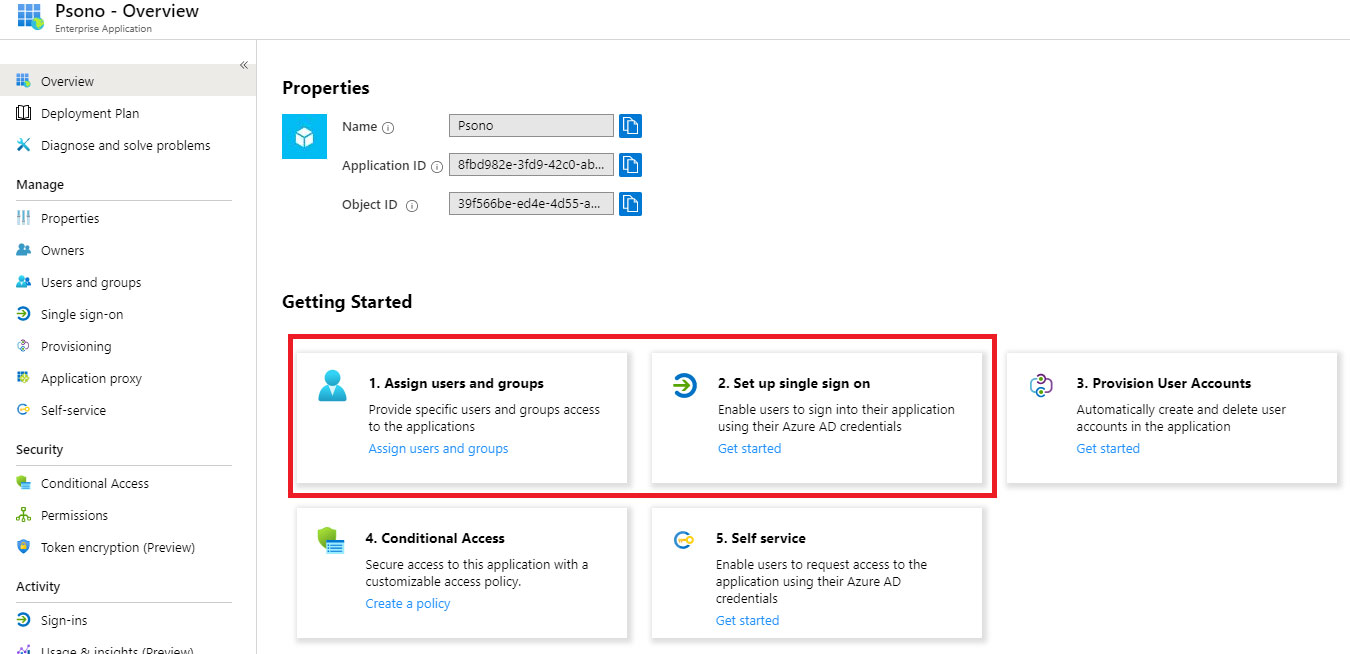
Configure SAML on the Application
Click on "2. Set up single sign on" and then choose "SAML".
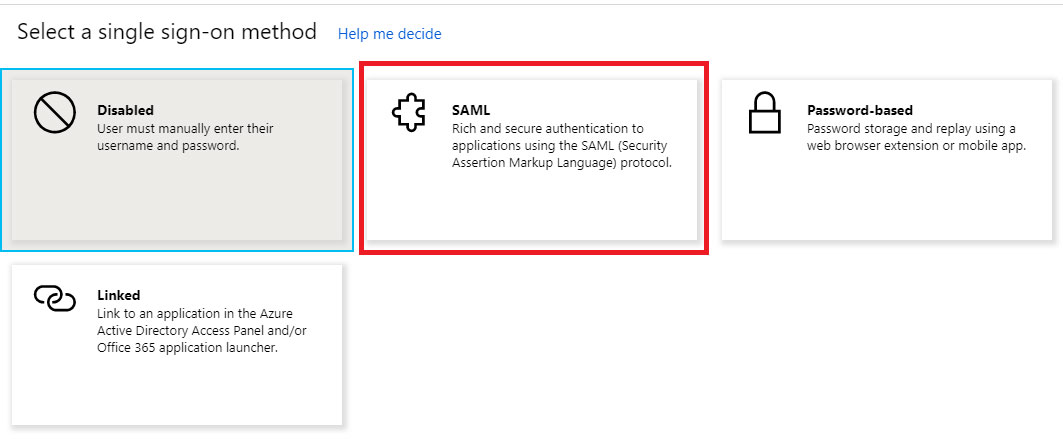
Basic SAML Configuration
Configure the URLs as shown in the picture below.

User Attributes & Claimes
Configure the "User Attributes & Claims"
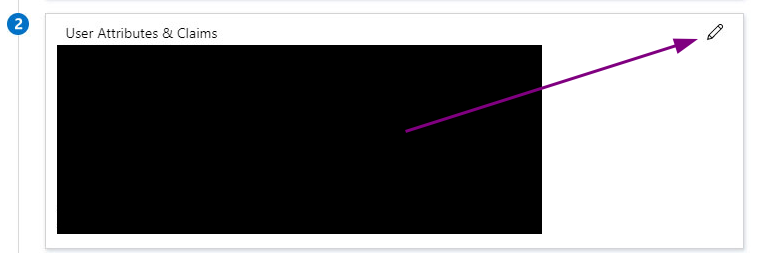
And adjust them as shown below:

Configure group claim with "Add a group claim":
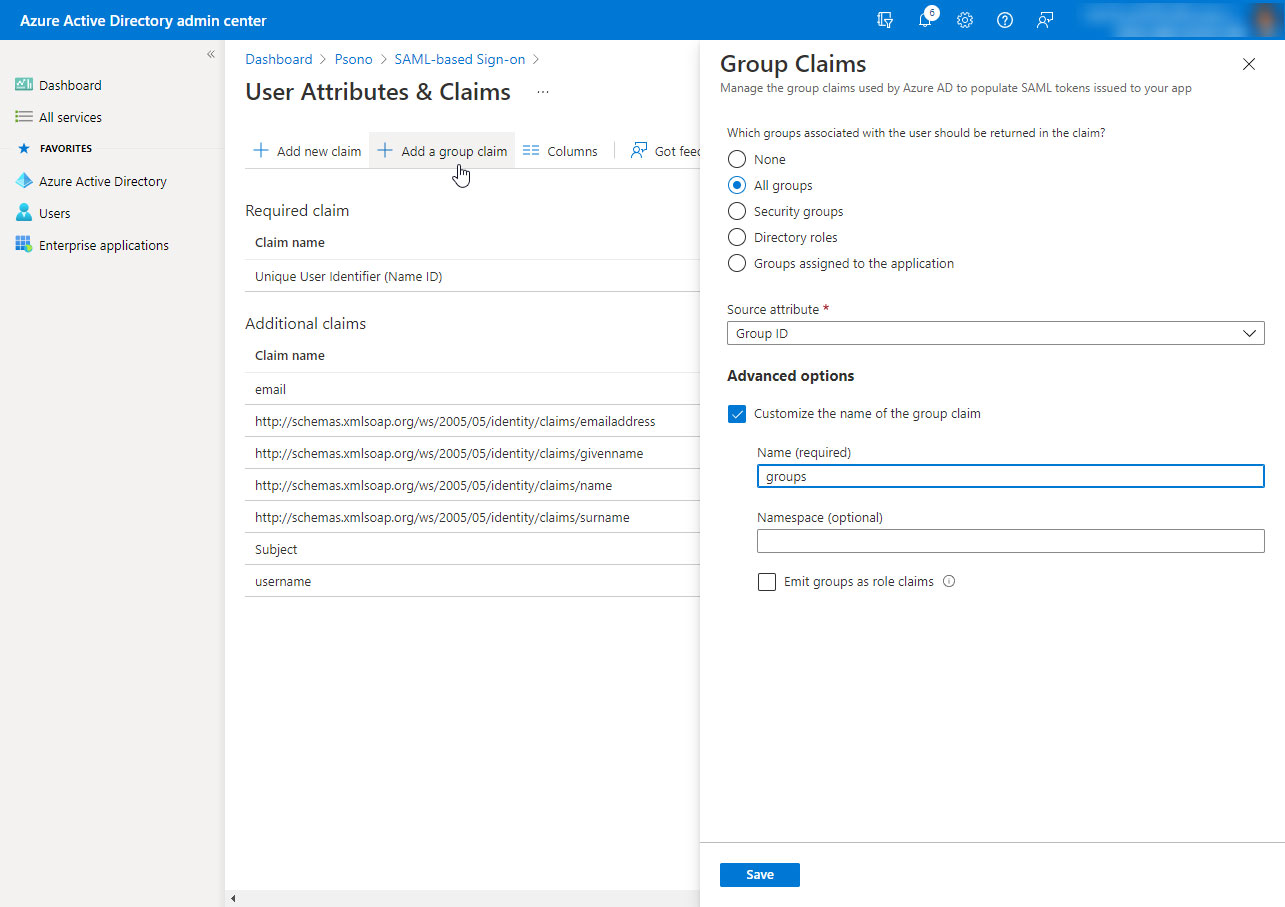
WARNING
Azure won't add more than 150 groups to a SAML response. If your user's might have that limit, you need to limit the amount of groups.
SAML Signing Certificate
Download Azure's idp certificate in Base64 as shown below:

WARNING
If you ever go back and modify the claims or the URLs in the "Basic SAML Configuration", then Azure will generate a new certificate which you have to download and use.
Copy Azure URLs
Take note of these two URLs as we will need them in a minute.

Go to App registrations
As a next step we need to create some API credentials to translate the group ids to readable names. So please go to "App registrations"

Select new application
Click on "All applications" and select the created application
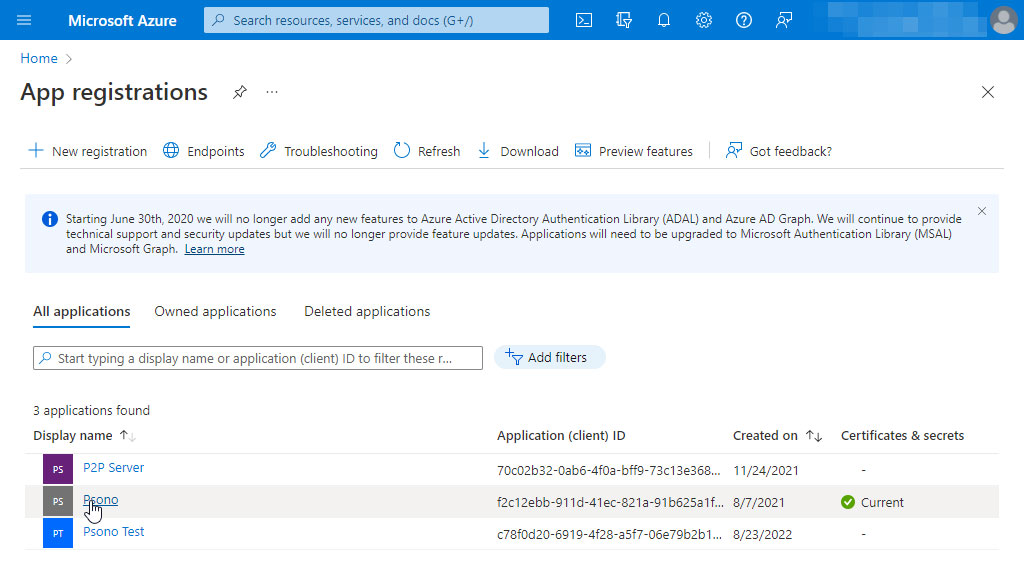
Create new API Permission
In the left menu click on "API permissions" and then "Add a permission"

Select "Microsoft Graph"
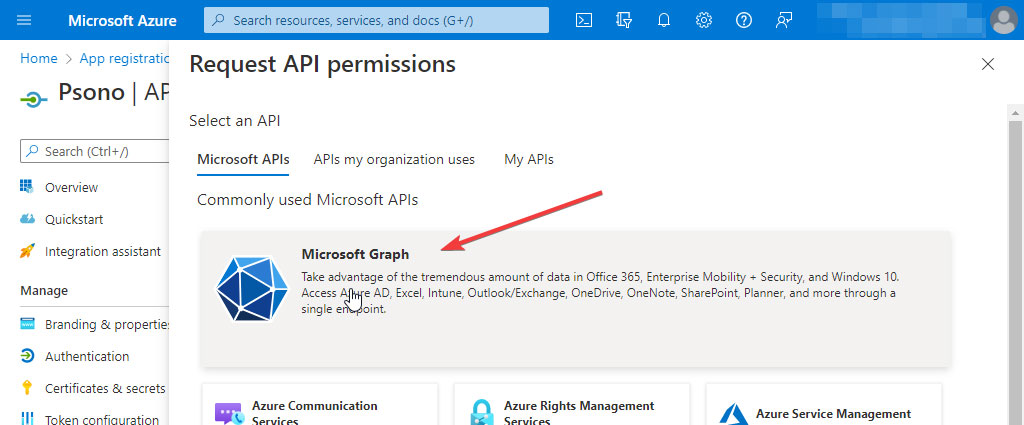
Select "Application permissions"

Choose "Directory.Read.All"
Search for "Directory.Read.All", check it, and then click on "Add permission" at the bottom.
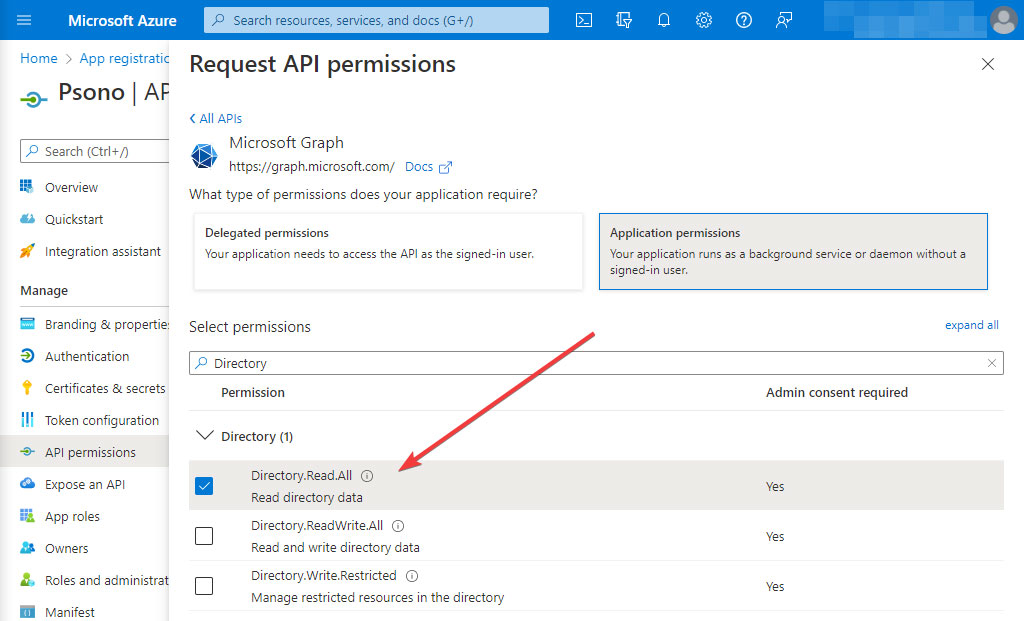
An administrator now needs to grant the permission. If you are an administrator, you can click on "Grant admin consent for ...". The status should flip to "Granted" .
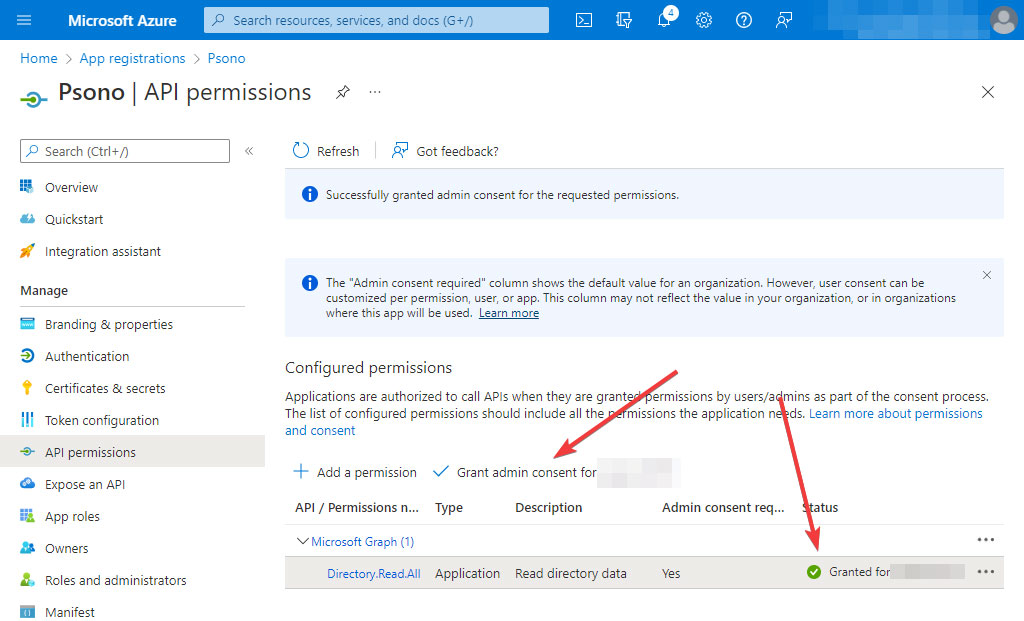
Create new client secret
On the left side click on "Certificates & secrets" and then "New client secret"

Enter a descriptive name and choose an expiration date.

Copy the "Value" of the new client secret. We will need it later and it won't be displayed again.

Go to "Overview"
Go to overview and take a copy of the "Application (client) ID" and the "Directory (tenant) ID"

# Server (settings.yaml)
During the installation of the server you have created a settings.yaml that needs to be adjusted now.
Generate SP certificate
You will need a certificate for your service provider (SP) later. You can generate one easily with:
openssl req -new -newkey rsa:2048 -x509 -days 3650 -nodes -sha256 -out sp_x509cert.crt -keyout sp_private_key.keyThis will generate a private key (sp_private_key.key) and the public certificate (sp_x509cert.crt).
Change or add SAML configuration in to settings.yaml.
SAML_CONFIGURATIONS: 1: idp: entityId: "REPLACE_WITH_AZURE_AD_IDENTIFIER" singleLogoutService: binding: "urn:oasis:names:tc:SAML:2.0:bindings:HTTP-Redirect" url: "https://login.microsoftonline.com/common/wsfederation?wa=wsignout1.0" singleSignOnService: binding: "urn:oasis:names:tc:SAML:2.0:bindings:HTTP-Redirect" url: "REPLACE_WITH_LOGIN_URL" x509cert: "CERT_FROM_AZURE_APPLICATION" groups_attribute: "groups" username_attribute: "http://schemas.xmlsoap.org/ws/2005/05/identity/claims/emailaddress" email_attribute: "http://schemas.xmlsoap.org/ws/2005/05/identity/claims/emailaddress" username_domain: "USER_DOMAIN" required_group: [] is_adfs: true honor_multifactors: true max_session_lifetime: 43200 azure_client_id: "APPLICATION_CLIENT_ID" azure_tenant_id: "APPLICATION_DIRECTORY_TENANT_ID" azure_client_secret: "VALUE_OF_NEW_CLIENT_SECRET" sp: NameIDFormat: "urn:oasis:names:tc:SAML:2.0:nameid-format:persistent" assertionConsumerService: binding: "urn:oasis:names:tc:SAML:2.0:bindings:HTTP-POST" attributeConsumingService: serviceName: "Psono" serviceDescription: "Psono password manager" requestedAttributes: - attributeValue: [] friendlyName: "" isRequired: false name: "username" nameFormat: "" privateKey: "SP_PRIVATE_CERTIFICATE" singleLogoutService: binding: "urn:oasis:names:tc:SAML:2.0:bindings:HTTP-Redirect" x509cert: "SP_X509CERT" autoprovision_psono_folder: false autoprovision_psono_group: false strict: true security: requestedAuthnContext: false- Change
serviceNameto match the name of your Azure's custom application - Change
USER_DOMAINto match your domain.tld - Replace
REPLACE_WITH_LOGIN_URLwith the "Login Url" usually something like https://login.microsoftonline.com/... - Replace
REPLACE_WITH_AZURE_AD_IDENTIFIERwith the Microsoft Entra ID (Azure AD) identifier usually something like https://sts.windows.net/... - Replace
CERT_FROM_AZURE_APPLICATIONwith the "Certificate (Base64)" from previous Azure configuration. (remove all line breaks) - Replace
SP_PRIVATE_CERTIFICATEwith the content of the previous generated "sp_private_key.key". (remove all line breaks) - Replace
APPLICATION_CLIENT_IDwith the "Application (client) ID" - Replace
APPLICATION_DIRECTORY_TENANT_IDwith the "Directory (tenant) ID" - Replace
VALUE_OF_NEW_CLIENT_SECRETwith the "Value" of the created client secret - Replace
SP_X509CERTwith the content of the previous generated "sp_x509cert.crt". (remove all line breaks)
Restart the server afterward
- Change
Adjust authentication methods
Make sure that
SAMLis part of theAUTHENTICATION_METHODSparameter in your settings.yaml e.g.AUTHENTICATION_METHODS: ['SAML']Restart the server afterward
(optional) Server Secrets
By default the server will keep a copy of the user's secret keys to allow people to login without a password. If you want true client side encryption and as such force users to enter separate password for the encryption you specify the following in your settings.yaml. You can also decide later and change that and migrate users during the login or apply this setting only to particular users or groups with policies in the Admin Portal.
COMPLIANCE_SERVER_SECRETS: 'noone'WARNING
If a user loses his password he will lose all his data.
(optional) Debug Mode
It is helpful in the later debugging to enable debug mode.
DEBUG: TrueWARNING
Restart the server afterward and don't forget to remove it before going to production.
# Client (config.json)
Now you have to configure your client, so your users can use this configured IDP.
Basic
Update your config.json similar to the one shown below.
{ ... "authentication_methods": ["SAML"], "saml_provider": [{ "title": "SAML Login", "provider_id": 1, "button_name": "Login " }] ... }The variable authentication_methods restricts the allowed login methods. In the example above only SAML will be allowed and the normal login "hidden". The title and button_name can be adjusted however you like. The
provider_idneeds to match the one that you used on your server.(optional) Automatic login
You may want to "automatically" click on the login button to initiate the login flow. You can accomplish this by modifying the config.json as shown below:
{ ... "authentication_methods": ["SAML"], "auto_login": true, ... }WARNING
This will only work if you have just one provider configured with only one authentication method. Users won't be able to modify the server url nor choose to register or interact with the login form in any other way.
